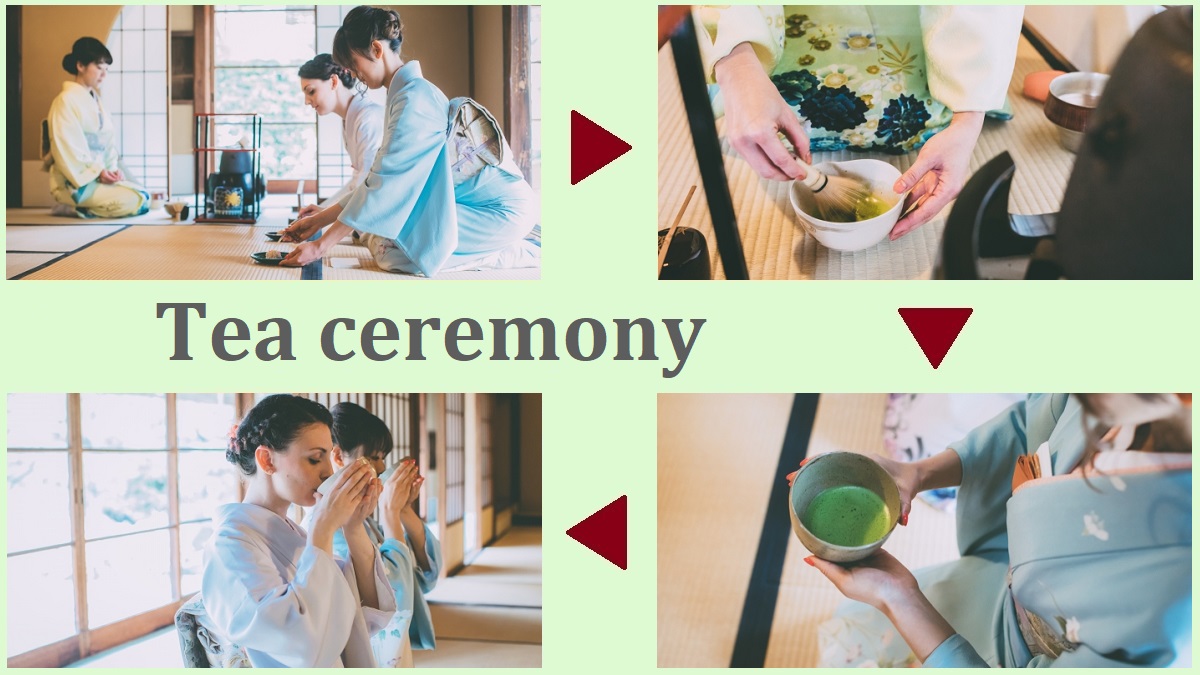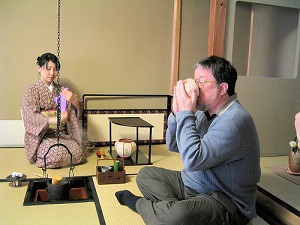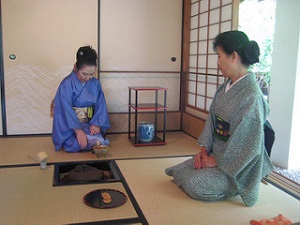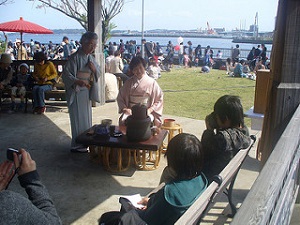Tea ceremony
History of tea ceremony
Tea was introduced from China around the 9th century.
But it finally started to become popular in the 12th to 14th centuries.
At that time, feudal lords often held the big tea parties.
On the other hand, some Buddhist priests established the way of tea party for communication of mind between a host and the guests.
In the 16th century, Sen-no-Rikyu (1522-1591) who was a merchant compiled the various styles of tea ceremony and he completed the current style of tea ceremony.
After that, his pupils passed down the know-how for generation.
Now, there are many schools across the country.
Elements of tea ceremony
A normal course of tea ceremony
Tea ceremony is called "Sadô" in Japanese.
Usually a tea ceremony starts around noon, and it takes 3 to 5 hours.
And not more than 5 guests are invited.
- First, invited the guests visit a waiting room (Yoritsuki).
They are served a cup of hot water. - The guests move to a garden and wait for the host on a bench.
- The host leads the guests to a tea room.
- The host lights chrcoal to boil the water, and burns insence at the same time.
The guests enjoy looking the vessels of insence. - The host serves a lunch called "Kaiseki".
- The first half of ceremony has finished.
The guests have a break at the garden.
The host prepares for the next ceremony in the tea room. - The guests enter the room again.
The host appears with wearing formal black kimono for making tea. - The host serves a sweet confectionery to each guest before the tea drinking.
- The host makes a cup of tea for each guest.
A guest drinks the tea slowly, and returns the cup to the host.
The host uses the same cup for the other guests.
This is the center of this ceremony, and the guests must perform with propriety. - After all guests finish drinking the tea, they enjoy looking the cup and tools for making tea.
- All of the ceremony has finished.
The host sends the guests off.
Above procedure is formal and is the full course.
Generally, the part from step 7 to 11 is held as a tea ceremony.
Tea room
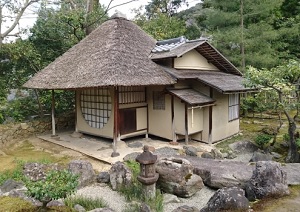
An old tea room in Kodaiji temple in Kyoto
A tea room for tea ceremony is usually a cottage in Japanese garden, and sometimes we can find it in any big hotels or public halls.
General private houses don't have such a tea room.
The cottage for tea room has only one Japanese small room.
And the entrance is very small.
The floor of the room covered with tatami mat and there is a tokonoma (an alcove for the space that artistic hanging scroll and flower arrangement are displayed).
And there is a small fire pit for boiling water on the floor.
Basically, the guests must sit in the "seiza" position.
To sit in the seiza style, you first kneel on the floor and rest the buttocks on the heels.
Because most foreigners don't have that experience, the legs fell asleep soon. (Even many recent Japanese people, too.)
Some schools may allow your favorite style of sitting.
How to make tea for ceremony
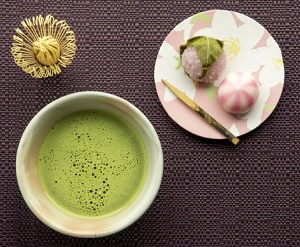
Maccha tea, bamboo whisk, and confectionery
Powdered green tea called "maccha" is used in tea ceremony.
An iron teakettle is set up in the tearoom, and the water is boiled over charcoal.
The host puts a small spoon of maccha into a ceramic cup like bowl.
Boiled water is drawn from the teakettle with a small bamboo ladle, and it is poured into maccha.
The host stirs it with a small bamboo whisk.
The finished tea is bright green and very creamy in the tea bowl.
The host offers the tea bowl in front of the guest.
The schools of tea ceremony
There are many schools of tea ceremony.
The major three schools are Omote-Senke, Ura-Senke and Mushakoji-Senke.
Nodate
Nodate is outdoor tea ceremony.
In spring or autumn, it is held as the casual tea ceremony in the garden.
Of course, it is held on a fine day.
Red carpet is put down on a field, and the tea ceremony is held.
Basically, the content is only having tea and confectionery.
And the guests enjoy the tea and the beautiful nature in the garden.
Nodate is sometimes held in the temple, shrine and park with Japanese garden.
In most cases, we can join the ceremony for a fee.

